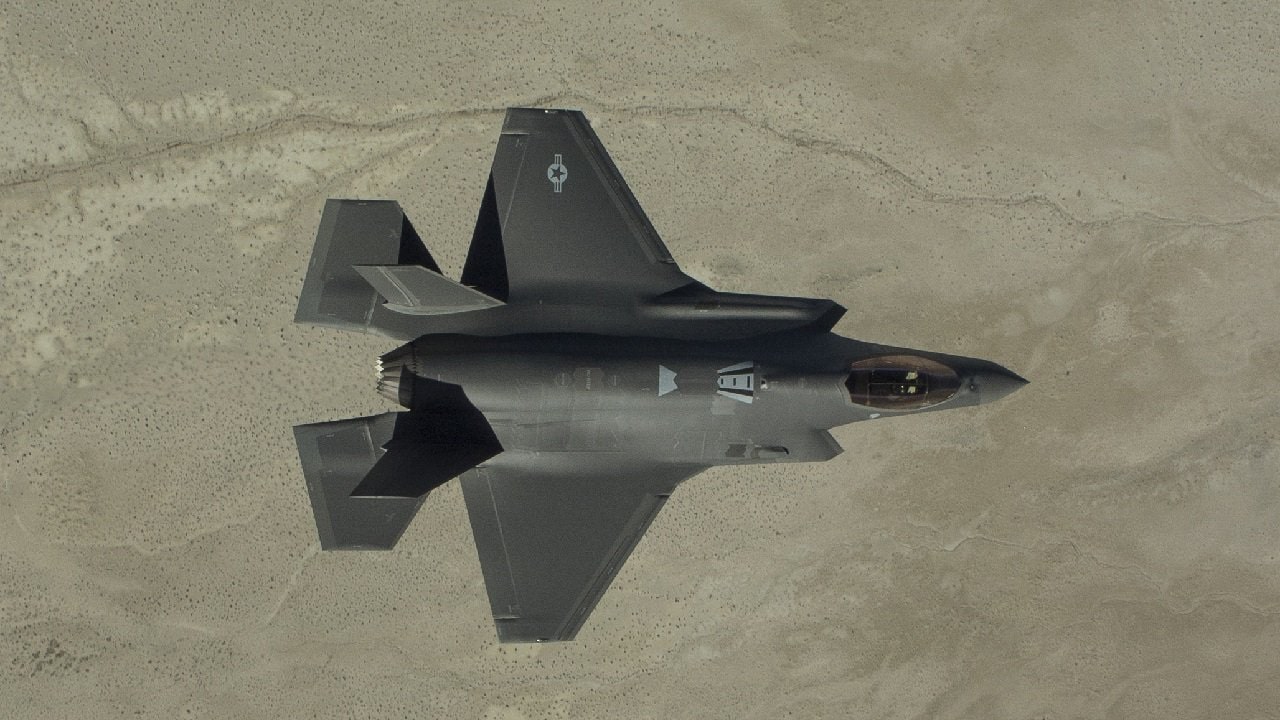F-35s head out for a key test: The U.S. Air Force has deployed almost 20 F-35A Lighting II stealth fighter jets in the Indo-Pacific to test what is probably one of the most important capabilities in the event of a conflict with China.
The F-35 Goes Realistic
Eighteen F-35A Lightning IIs from the 354th Air Expeditionary Wing (AEW) have deployed to Japan to test and train on Agile Combat Employment (ACE).
“ACE is a scheme of maneuver to increase survivability and continue to generate combat power despite enemy attacks on forward airfields. These tactics complicate enemy targeting and enhance flexibility for friendly forces,” the 354th Fighter Wing stated.
In the event of a war with China, the Air Force will need to quickly disperse its aircraft forward to effectively take part in the combat.
While in Japan, the F-35A stealth fighter jets will work with the U.S. Marine Corps F-35Bs, which is the short take-off, vertical landing (STOVL) version of the fifth-generation aircraft.
“At home station all of the equipment, infrastructure, and personnel we need to accomplish the mission are already in place. Each time we practice quickly transitioning from normal operations at home station to operating out of less familiar locations, we’re better equipped to operate in dynamic environments and utilize innovative efforts like multi-capable Airmen, flexible logistics and decentralized command and control,” U.S. Air Force Colonel David Berkland, the commanding officer of the 354th Air Expeditionary Wing, said in a press release.
F-35: ACE to Win the Fight
To be effective, ACE requires a unit to mobilize and deploy its aircraft across a region a pre-determined region fast.
Although the pilots should know where they will be going in the event of a conflict, to be the most effective, ACE needs to have an element of surprise. There must be an abundance of potential staging points so as to compensate for any intelligence breaches that would alert an adversary of the locations and for making an adversary’s life generally harder.
During a full House Armed Services Committee testimony about the 2023 budget of the Air Force in April, Air Force Secretary Frank Kendall III and Air Force Chief of Staff General Charles Q. Brown specifically mentioned ACE and how the Air Force is working to enhance the capability.
“This budget continues funding for Agile Combat Employment (ACE) in both the Indo-Pacific and European regions while work is ongoing to define the most cost-effective mix of hardening, active defense, deception, and dispersion activities. This includes necessary mobile logistics or prepositioned assets required to sustain operations. All our investments in tactical airpower depend on our success at achieving resilient forward basing,” the Air Force stated during the hearing.
Forward Arming and Refueling Point (FARP) capability. Dispersing F-35 fighter jets across the Indo-Pacific during a war with China is only half of the fight. The Air Force needs to be able to sustainably refuel and rearm them quickly. And this is where FARP comes in.
1945’s New Defense and National Security Columnist, Stavros Atlamazoglou is a seasoned defense journalist specializing in special operations, a Hellenic Army veteran (national service with the 575th Marine Battalion and Army HQ), and a Johns Hopkins University graduate. His work has been featured in Business Insider, Sandboxx, and SOFREP.

